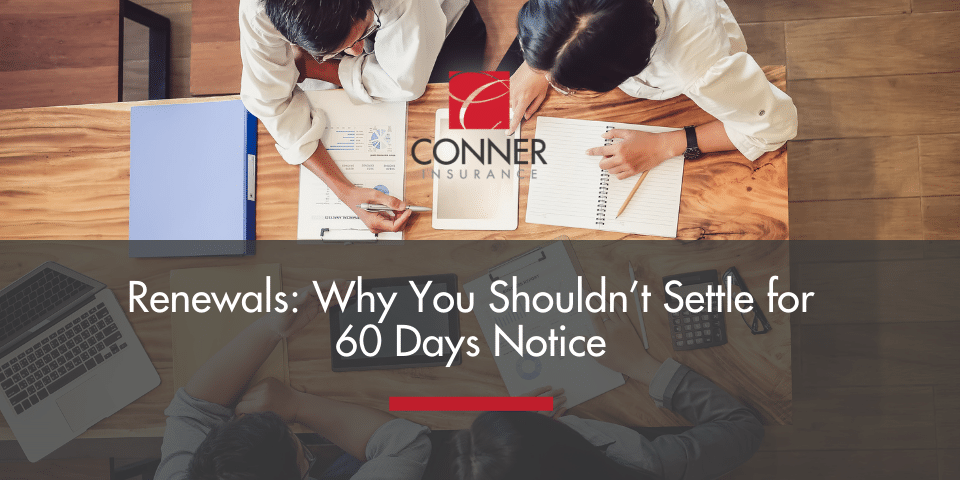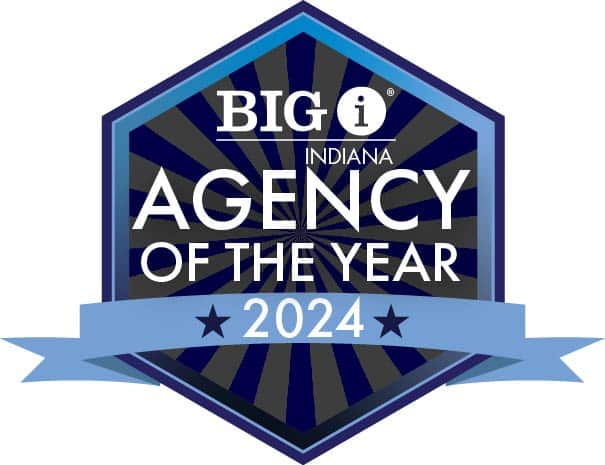Renewals: Why You Shouldn’t Settle for 60 Days Notice

Renewals: Why You Shouldn’t Settle for 60 Days Notice. Two months is long enough to plan a vacation, make a significant lifestyle change or prepare a captivating presentation. Two months is not long enough to make the most of your benefits program. Yet, this is roughly the amount of time most insurance companies give to employers to make important decisions about their benefit offerings.
Many insurance companies present renewals to their clients as late as possible, a common practice that isn’t fair to employers or their people. With only sixty days to review, employers don’t have enough time to properly evaluate the costs and impact the benefits renewal will have on their business. Without an adequate amount of time to make significant changes, your benefits program could be working against you.
THE IMPORTANCE OF PLANNING AHEAD.
This time of year most employers are completing their renewals with their brokers or advisors, aligning their fiscal year for budgetary and financial reporting ease, with most plans renewing near the end of the 4th quarter. But what happens after January 1st is just as important. Instead of filing the topic away until the next renewal season, employers should take this time to work with their consultants to ensure their benefits program is running as efficiently as it can.
There is no better time than after your renewal to ask questions and take a good look at how your benefits program is running. With the help of an experienced consultant, you can gather important data about your program that can help you decide what changes will be most useful heading into the next renewal.
A comprehensive benefits program takes time to analyze, design and implement. Offering a cookie-cutter program can be quick and seem easy, but year after year, without proper management your benefits program could become underutilized and costly. Some points to consider when addressing your benefits program throughout the year are:
- Compile existing data. Speak to your consultant who can gather and analyze necessary data from your existing benefits program. This data can then be used to help determine if your plan is working the way it should or if any changes need to be made.
- Survey employees. Periodic surveys should be sent out to employees for feedback or concerns. Surveys can help show if there are any gaps in coverage or if new programs need to be considered.
- Review benefits usage. Your consultant should be able to provide a report showing what benefits are used or underutilized. Employee’s needs change regularly which can cause a shift in necessary or desired benefits.
- Compare with other businesses. Comparing your benefits with other companies can be a great way to gain insight into how to budget for and structure your plan. However, because your benefits programs should be as unique as your workforce, benchmarking to build your plan should be used strategically.
- Design a 3-5 year plan. Once all data and surveys are analyzed a strategic plan can be designed. By using a 3-5-year plan, changes to your program can be made gradually over time.
- Create a communication strategy. Introduce changes to your employees in a way they can relate to. For example, if you have a technically inclined workforce, sending email or text messages could be a great way to communicate changes. In comparison, a small group could benefit more from one-on-one communication.
- Continue to review data year-round. Discussions about your program with your consultant should occur frequently, not just at renewal time.
Long-term and short-term goals should be discussed and continued monitoring should occur from the first through the fourth quarter. Your consultant should discuss results with you and offer strategies that make sense for your unique business. Gathering information and analyzing the results is essential for making appropriate decisions about your benefits program – and that takes time.
DON’T SETTLE FOR 60 DAYS NOTICE.
The advantage of frequent communication between you and your consultant is the ability to see potential areas of concern sooner. A common misconception is that you cannot make changes or adjustments to your health plan outside of the renewal policy. This is not true. You can make meaningful changes throughout the year that can have a real impact on your bottom line.
To make the most of your benefits program and to produce advantageous changes employers should be thinking about their next renewal 9 to 10 months ahead of the next. This is especially true for larger businesses.
Sixty days sounds like a long time. But when it comes to a comprehensive benefits program, it’s not enough. Now is the time to take a deep dive into your plan. Keep the momentum going and you’ll notice a difference!












